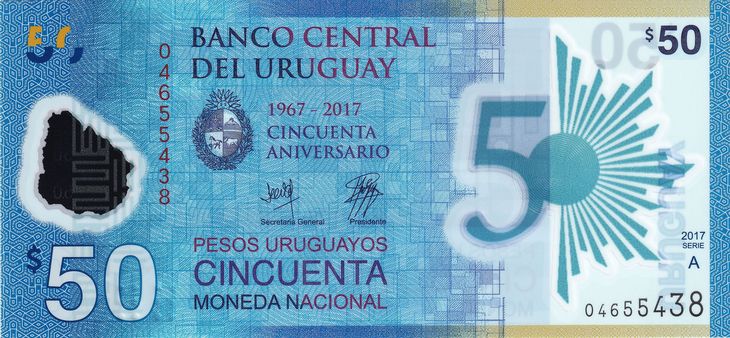As a pioneering country in environmental matters, Uruguay has polymer banknotes, a material with greater durability and security.
The commitment of Uruguay with sustainability is manifested in different management axes and one of them is monetary issue, with the impression of polymer banknotes, a more environmentally friendly material, as well as durability and safety.
The content you want to access is exclusive to subscribers.
The country was one of the international pioneers in the matter, when the Central Bank of Uruguay (BCU) authorized the issuance of 10 million pesos in a commemorative 50-peso bill, 50 years after the founding of the monetary authority.


Two new authorizations were added to this milestone on October 3, 2020. Within the framework of the Heritage Day, The BCU put into circulation other new low-denomination bills of 20 and 50 pesos, the first in homage to Juan Zorrilla of San Martín and the second in honor of José Pedro Varela.
Among the attributes of the three tickets, printed by Oberthur Fiduciaire SAS, It is also worth noting that they are accessible in reading for people with different disabilities, since the smaller the denomination, the smaller the size.
Bill 50.jpg

How are polymer banknotes different from cotton banknotes?
The sustainability and the measurement of carbon footprint in all productive activities is one of the pillars of Uruguayan strategy to combine finances with care for the environment, as revealed after the issuance of the green bonus and the sustainable credits that the government achieved with multilateral organizations.
In this framework, polymer banknotes appear as a key solution, since they allow “circularity throughout the entire process,” the company highlighted in a statement. CCL Secure, noting that “the use of materials and energy is maximized, significantly reducing its carbon footprint.”
Among the benefits, this type of material generates lower emissions of greenhouse gases than cotton bills, something linked mainly to the distribution stage, while it is estimated that during its production it reduces the impact on water depletion by 98.8% compared to the cotton.
“It is scientifically proven that polymer banknotes have a useful life at least 3 times longer than that of cotton banknotes, since in countries like Australia, Canada or Costa Rica “Central banks indicate that their polymer banknotes last five times longer,” said CCL Secure, regarding another key aspect related to environmental impact.
Source: Ambito




